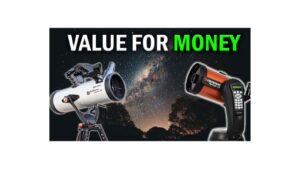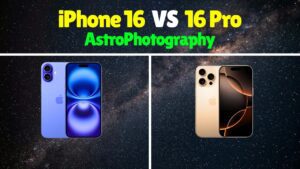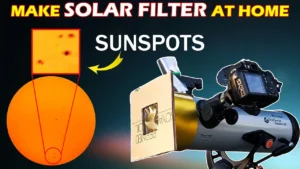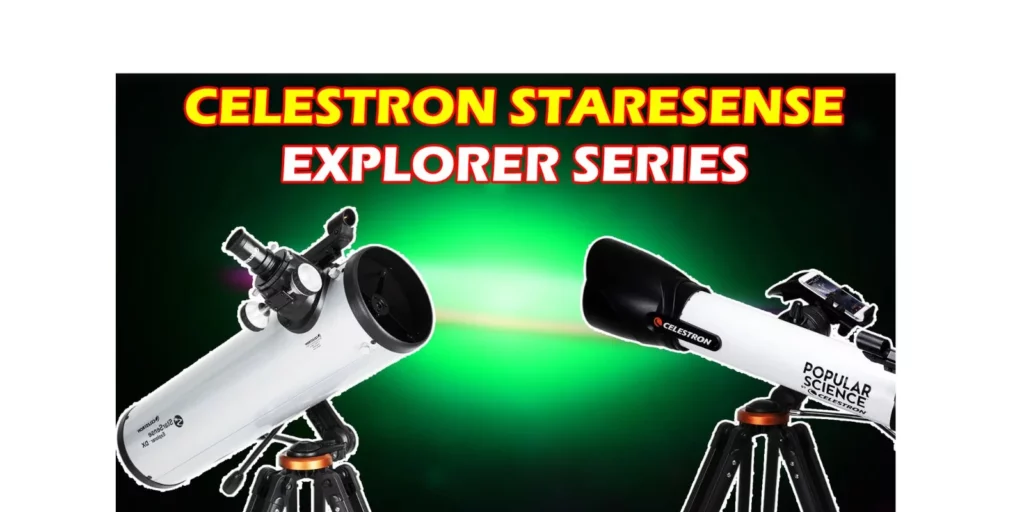
If you are a reader of this website, then you already know that Celestron offers a wide variety of telescopes for beginner to advanced astronomers. They have these telescopes classified in different series. Each series has its purpose. One more such series of telescopes from Celestron is the StarSense Explorer series. In this series, there are 7 telescopes. Out of these 7, Celestron recently added 2 Dobsonian Telescopes. We already wrote a detailed article on these two telescopes. So we will not cover those two telescopes in this article.
StarSense Explorer Series Telescopes
Before we move on to each telescope in the series, let’s learn about the StarSense explorer series. The majority of the telescope Celestron manufacturers are beginner friendly. To make stargazing much more beginner-friendly, Celestron introduced the StarSense explorer series. Nowadays everyone uses smartphones. Celestron just took advantage of this fact and made the most ever beginner-friendly telescope.
In the StarSense explorer series, your telescope works in combination with your phone. Celestron has developed a special app for this series. The name of the app is the StarSense Explorer app.
What is so special about this app? This app will guide you while navigating through the night sky. All you have to do is mount your phone on the telescope. The app will automatically detect all the visible objects in your night sky. When you enter the object you want to see in the app. The app will tell you in which direction you should move your telescope. As you get near your target object the orange mark will turn green. This means the object is visible from the eyepiece of your telescope.
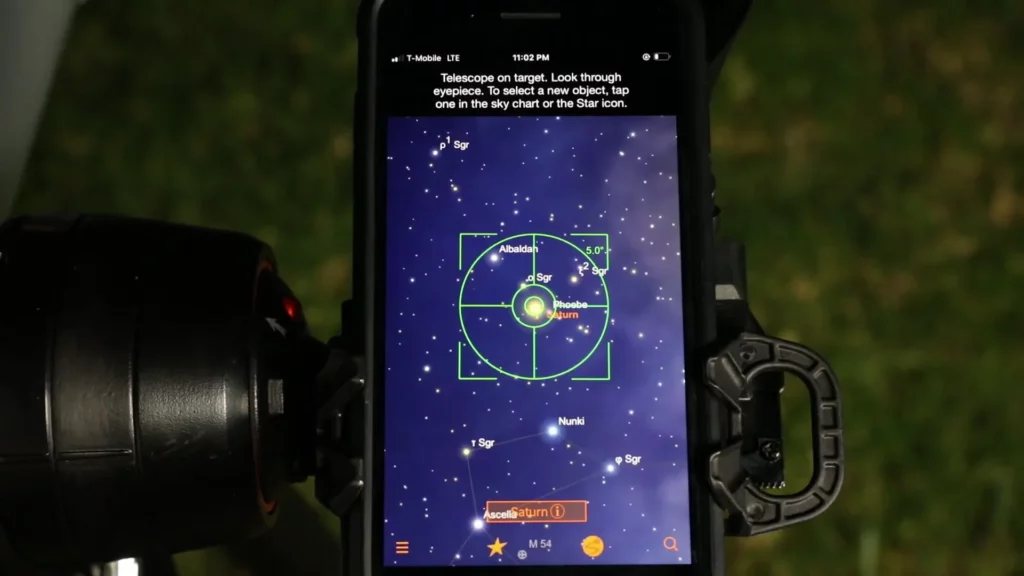
This makes navigating through the night sky much easier and less time-consuming. The StarSense explorer app is a little different than the other astronomy apps you find. This app works on the principle of LISA also known as “A Lost in the Space Algorithm“. This algorithm is usually used by satellites to orient them in the orbit. By using the same technology the app can tell you accurately when the target is visible in the eyepiece. Other apps use your phone’s gyroscope to achieve the same result which is not that accurate compared to LISA. If you live in a much-polluted region, even then finding the most popular celestial objects such as Jupiter, Saturn, or Orion nebula will not be difficult for this app. Now let’s take a look at the telescopes in this series.
Popular Science StarSense Explorer DX 100AZ
To manufacture this telescope Celestron has partnered with Popular Science. Popular Science is an organization that is focused on teaching people about science, technology & the future.
This first telescope is a refractor-type telescope. The aperture of this telescope is 100mm. The focal length of this telescope is 660mm and the focal ratio is 6.6. The telescope comes with two eyepieces one is 25mm and the other is 10mm. The highest useful magnification of this telescope is 241X and the lowest useful magnification is 15X
The optical tube assembly has coatings. This ensures maximum light passes through the aperture. The weight of the optical tube assembly is 4lbs, around 1.81kg.
This telescope has a manual alt-azimuth mount. The weight of the Mount is 9.2 lbs around 4.17kg. The total weight of the kit of this telescope is 13.5 lbs around 6.2kg. This makes this telescope very lightweight and can be used as a grab-and-go telescope. With this telescope, you can see Jupiter and its moons & also the cloud bands of Jupiter. You can also see Saturn, Orion nebula, and star clusters.
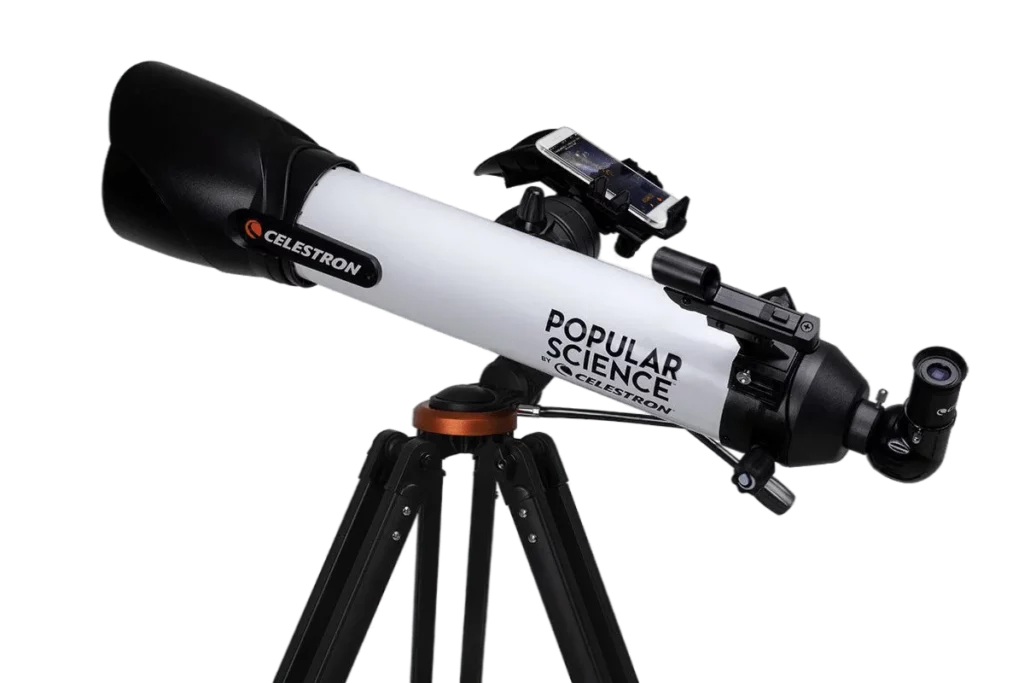
StarSense Explorer LT 80AZ
This is also a refractor telescope. It has an aperture of 80mm and a focal length of 900mm. Its focal ratio is 11. The highest useful magnification of this telescope is 189X and the lowest useful magnification is 11X.
The weight of the optical tube assembly is 5.4 lbs around 2.5 kg. This telescope also comes with a manual alt-azimuth mount. The weight of the Mount is 3.8 lbs around 1.75 kg. The total weight of the telescope kit is 9.2 lbs around 4.25 kg. This makes this telescope a lightweight grab-and-go telescope.
This telescope comes with one 25mm eyepiece and another 10mm eyepiece. On top of that, you also get a 2X Barlow lens with this telescope. One feature this telescope has is the red dot finder. If you do not want to use the StarSense Explorer app you can use the red dot finder to find your target objects.
As we explained in the focal ratio video, a higher focal ratio is good for viewing planets. If you haven’t watched that video you can watch it here. This telescope has a focal ratio of 11. So with this telescope, you can see Jupiter, Saturn, and many nearby planets in our solar system.
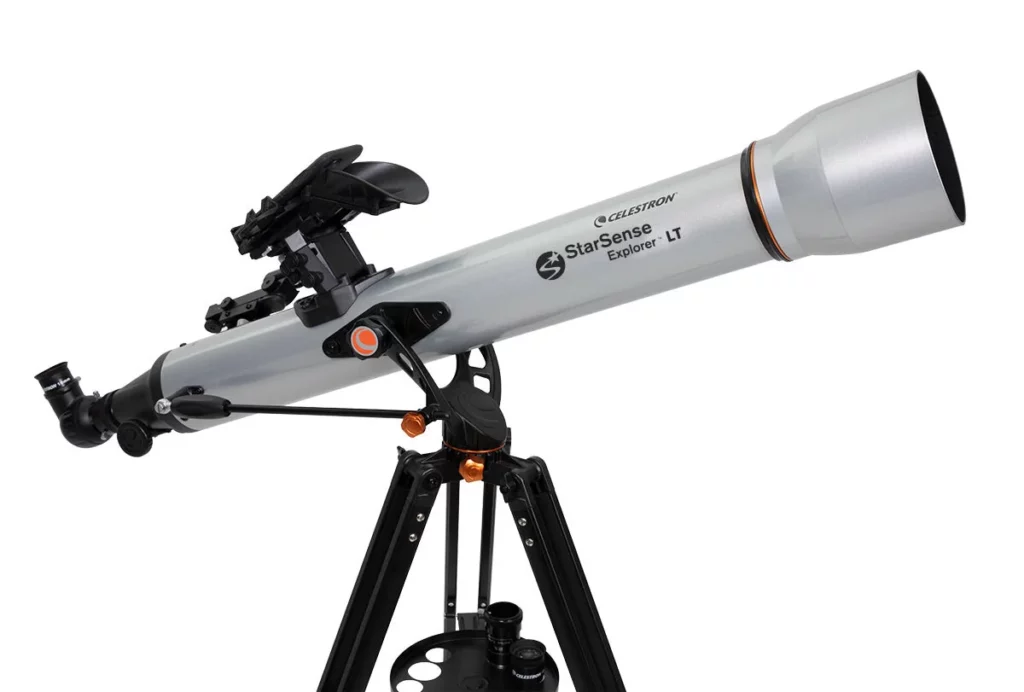
StarSense Explorer DX 102AZ
This is also a refractor telescope. Its aperture is 102mm and its focal length is 660mm. Its focal ratio is 6.5. The highest useful magnification of this telescope is 240X and the lowest useful magnification is 15X. This telescope is quite similar to StarSense 100AZ but this one has some added extra features.
The telescope has a manual alt-azimuth mount. The Total weight of the telescope is 14lbs, around 6.5 kg. The telescope comes with 2 eyepieces one 25mm & another 10mm.
It also has a red dot finder if you do not want to use the StarSense app. The built quality of this telescope is better than the popular Science 100AZ. With this telescope, you can see Jupiter, its moons & cloud bands, Saturn, and many bright deep space objects.
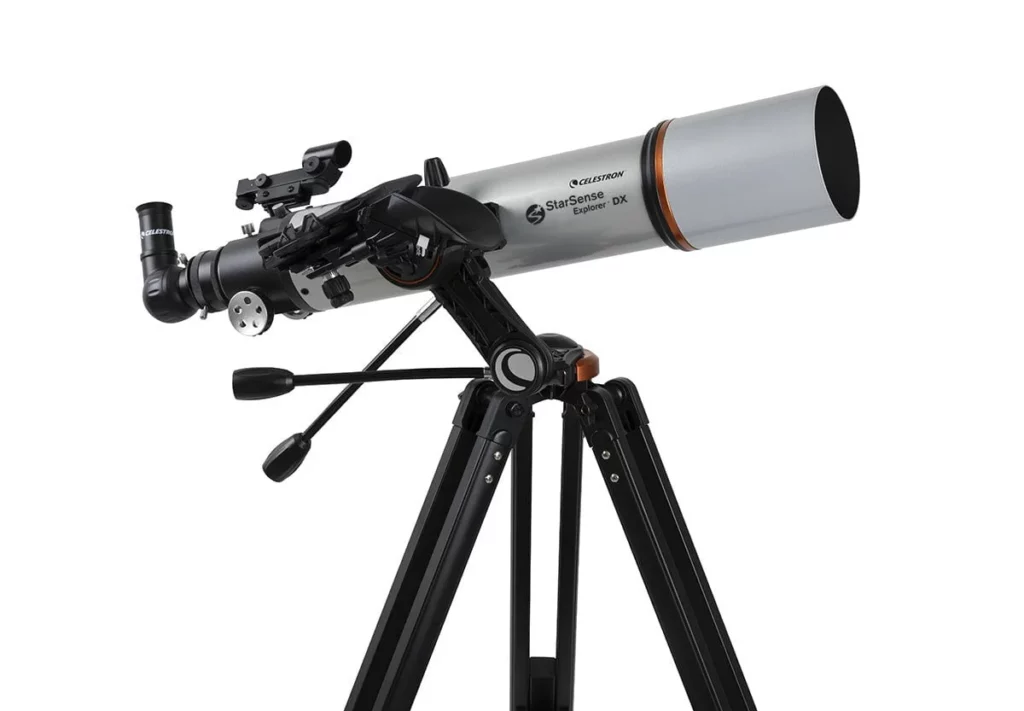
StarSense Explorer LT 114AZ
This is a Reflector-type telescope. The aperture of this telescope is 114mm around 4.5-inches and the focal length is 1000mm. It has a focal ratio of 9. The highest useful magnification of this telescope is 269X and the lowest useful magnification is 16X. The weight of the optical tube assembly is 6.6lbs, around 3kg. The optical surfaces are coated with aluminum and silicon dioxide. This telescope also has a manual alt-azimuth mount. The total weight of the telescope kit is 10.4 lbs around 4.75kg.
You get two eyepieces, one 25mm & another 10mm. You also get a 2X Barlow lens with this telescope, to double the power of each eyepiece. There is also a red dot finder scope with this telescope. You get an accessory tray to keep any extra accessories for your telescope.
With this telescope, you can see bright views of Jupiter and its Galilean moons, its cloud bands, and the great red spot. You can also see the rings of Saturn. The Orion nebula and Star clusters.
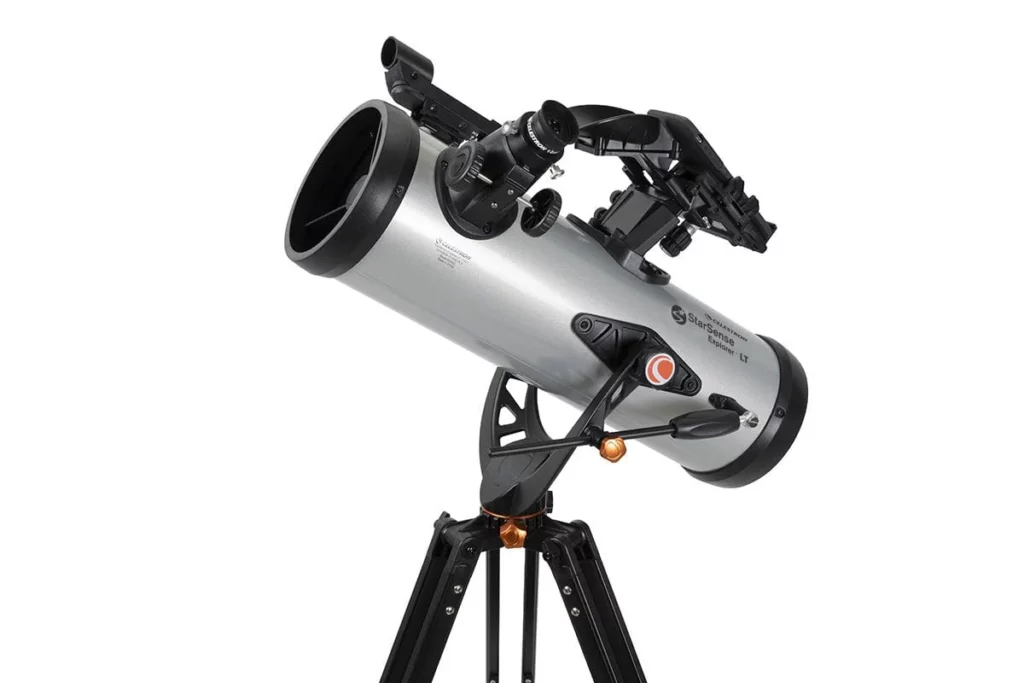
StarSense Explorer 130AZ
This was the biggest aperture telescope before Celestron added 2 more telescopes in this series. It is also a reflector-type telescope. It has an aperture of 130mm around 5-inches. Its focal length is 650mm and its focal ratio is 5. Its highest useful magnification is 306X and the lowest useful magnification is 19X.
This telescope is quite similar to the StarSense 114AZ model but with a bigger aperture. It also has a manual alt-azimuth mount. The total weight of the telescope kit is 18lbs, around 8kg. This telescope has a focal ratio of 5 which means it mostly will give you a wide field of view. The wide field of view is good for observing deep space objects.
With this telescope, you can see sharper images of celestial objects than what you can see with the StarSense 114AZ model. This telescope will show you the moon and its craters in great detail. You can also see the Andromeda Galaxy, Triangulum Galaxy & Bodes galaxy with this telescope.
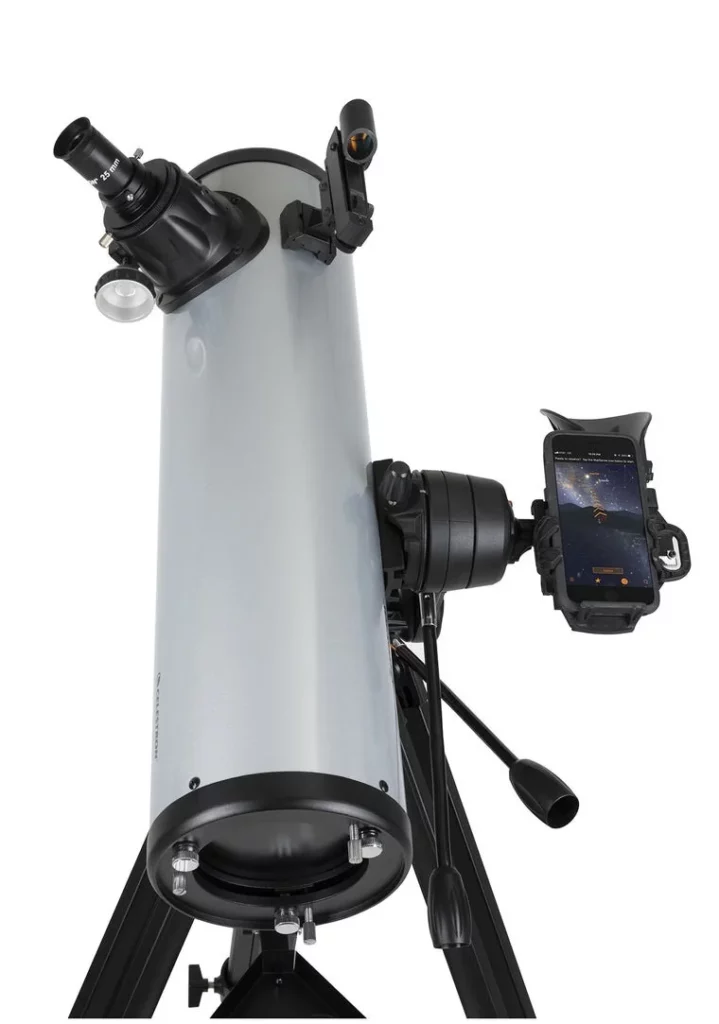
Conclusion
As you might have noticed, all the telescopes in this series have similar features. The quality of images you see will completely depend on the aperture size of your telescope. Overall the main purpose of this Celestron StarSense Explorer telescope series is to make stargazing very beginner friendly. This is one of the reasons they added the simple but big aperture Dobsonian telescopes in this series.
All telescopes in this series come with an alt-azimuth mount. So, they are not really suitable for long-exposure astrophotography. You need an Equatorial mount for dedicated astrophotography. If your aim is to do dedicated astrophotography then these telescopes are not for you.
We hope this article helped you to understand everything about StarSense Explorer Series Telescopes to make a better buying decision. You can also find the best suitable telescope for you with our telescope suggestion tool.

